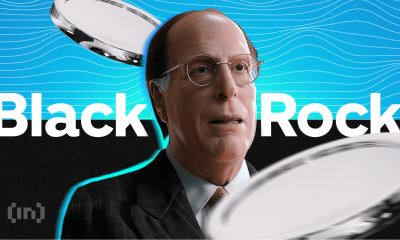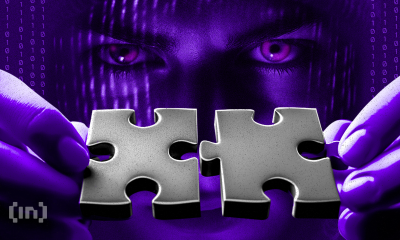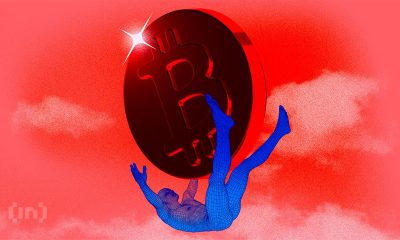Market
Former CFTC Chair Flags Risks in Trump’s Crypto Ventures
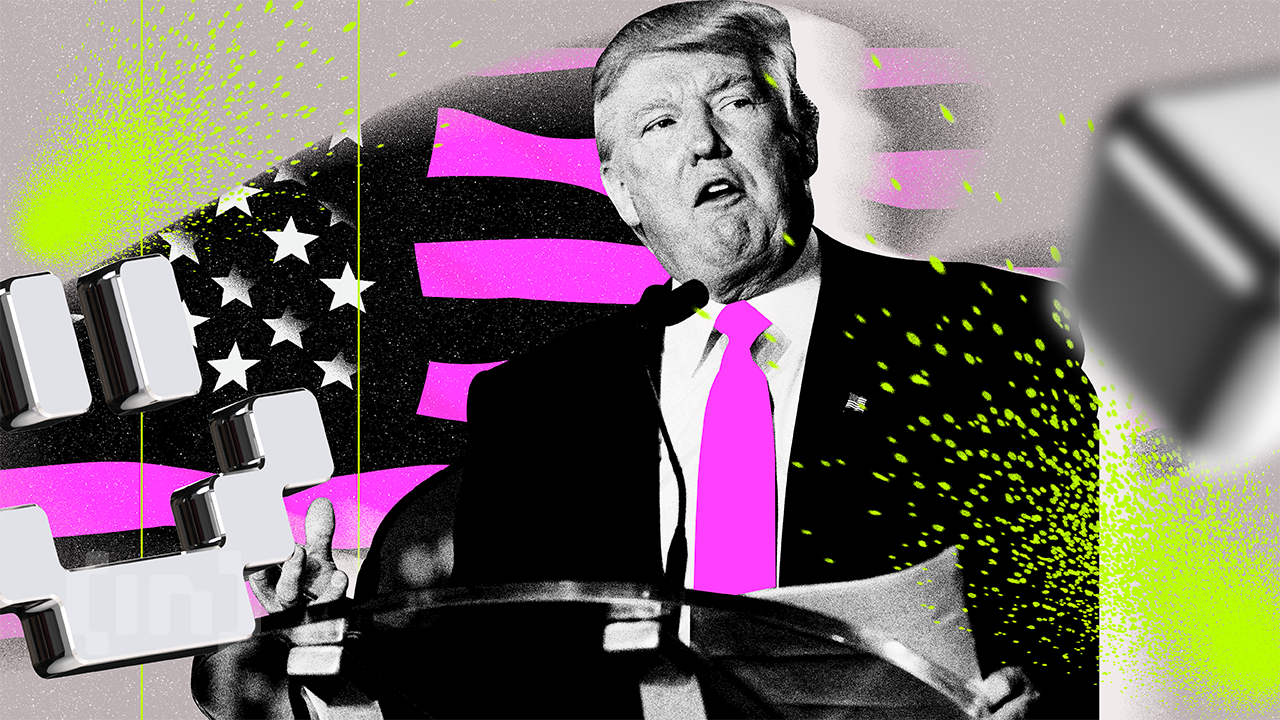
In an exclusive interview with BeInCrypto, former US CFTC Commissioner Timothy Massad explains how President Trump’s crypto ventures and political power have significantly overlapped in his first two months at the White House.
Shortly before assuming office for the second time, US President Donald Trump dove head-first into a flurry of crypto experiments. From endorsing World Liberty Financial (WLFI) to launching his meme coin, Trump is raising serious concerns over conflicts of interest. Tim Massad, the 12th CFTC Chairman, who served under Barack Obama, shares his thoughts.
A Historic President For Many Reasons
Before assuming his first term in office in 2016, President Trump broke with modern precedent by departing from established conflict-of-interest norms. A real estate mogul with a trademark for a last name, Trump would be entering the Oval Office as the leader of a multi-billion dollar empire.
While former presidents like Jimmy Carter and George W. Bush took measures to separate themselves from their businesses by placing their assets in a blind trust, the sitting President took a different approach.
Instead, Trump handed day-to-day management decisions over to his sons but did not divest in his ownership stake.
Though he received much backlash during his first term over conflict of interest concerns, Trump refused to relinquish ownership of the Trump Organization before assuming office for the second time.
However, the ‘conflict of interest’ has reached a new level this time, compared to 2016. Today, his ventures extend far beyond real estate. Trump has now secured a significant footing in the crypto industry.
Given Trump’s favorable stance toward digital asset policy development, players inside and outside the industry have begun to wonder whether his decisions are based on the sector’s best interests or are designed to benefit his own ventures.
How Deep is Trump’s Involvement in World Liberty Financial?
Though Trump does not have a direct role in WLFI, he appears on the whitepaper’s list of supporting teams as “Chief Crypto Advocate.” His three sons, Eric, Donald Jr., and Barron, are also on the list.
Reports further unveiled that the Trump family holds a 75% stake in the platform’s net revenue and a 60% stake in the holding company. At the same time, Trump and his associates own 22.5 billion of the company’s tokens.
For former CFTC Commissioner Tim Massad, despite Trump’s informal role in WLF’s governance, his stake in the platform’s performance raises serious conflicts of interest.
“I think it’s unprecedented and plainly wrong for a President of the United States to engage in commercial ventures or have his family and associates engage in commercial ventures that can be directly influenced by the policies he adopts as President or the statements he makes about those policies,” Massad told BeInCrypto.
Meanwhile, the tokens themselves are non-transferrable, limiting financial flexibility. Though the project aims to provide token holders access to a range of DeFi-related products and services, it has yet to launch them. In the meantime, token holders will have to wait until the time comes to use their tokens.
“I have yet to see any real business case or utility that’s of value to people who invest. So I think it all just has a character of taking advantage of people,” Massad added.
The industry has also grown weary over how WLF and other Trump-endorsed projects could be used to gain the President’s favor.
Industry Leaders Voice Concerns Over World Liberty Financial’s Legitimacy
Shortly before Trump launched World Liberty Financial, many prominent figures in the crypto sector warned that the project could cause Trump further legal troubles. Meanwhile, Alex Miller, CEO of Web3 platform Hiro, described the project as an “obvious pump scheme.”
Meanwhile, Alex Miller, CEO of Web3 platform Hiro, described the project as an “obvious pump scheme.”
Other industry leaders, such as Mark Cuban, Max Keiser, and Anthony Scaramucci, also criticized Trump’s decision to proceed with WLF’s token sales. Trump’s involvement in the project heightened fears that crypto’s fragile public image and controversial reputation would be smeared further.
Massad agreed with this last point, adding that crypto policy development is alive and well today more than ever. The ongoing development of stablecoin regulations, open talks of a national crypto strategic reserve, and a Senate-driven digital asset working group are only some of the current institutional initiatives.
“He, the Trump Organization and his family members should not be engaging in commercial ventures that pose such blatant conflicts of interest, given the fact that crypto regulation and things like a potential Bitcoin reserve are important policy issues today. A US president shouldn’t be engaging in these things at all, in my view,” Massad said.
Since the project’s launch six months ago, several examples validating these concerns have emerged. The most notable one has focused on Tron founder Justin Sun.
Justin Sun’s Controversial Investment in WLFI
TRON founder Justin Sun became World Liberty Financial’s largest investor in November after buying $30 million worth of WLF tokens.
The move was highly controversial. Despite Trump’s endorsement, WLFI struggled to meet its $30 million fundraising target during its first public sale. The token’s availability was restricted, excluding general trading and limiting purchases to non-US and accredited US investors.
Sun’s investment turned WLFI’s luck around. Soon after that, he also became one of the project’s advisors. Then, on the day of Trump’s inauguration, Sun invested an additional $45 million in the project, bringing the total sum to $75 million.
This investment brought varying degrees of scrutiny. While some questioned his quick transition from investor to advisor, others pointed to Sun’s past as a potential motive for his contributions.
In March 2023, the SEC filed fraud charges and other securities law violations against Sun and his companies. This regulatory baggage has led some industry leaders to question the wisdom of his association with World Liberty Financial.
Meanwhile, Tron’s price soared following Sun’s latest WLF investment. Tron, which had been experiencing lagging prices up until that point, was able to jumpstart its trading activities.
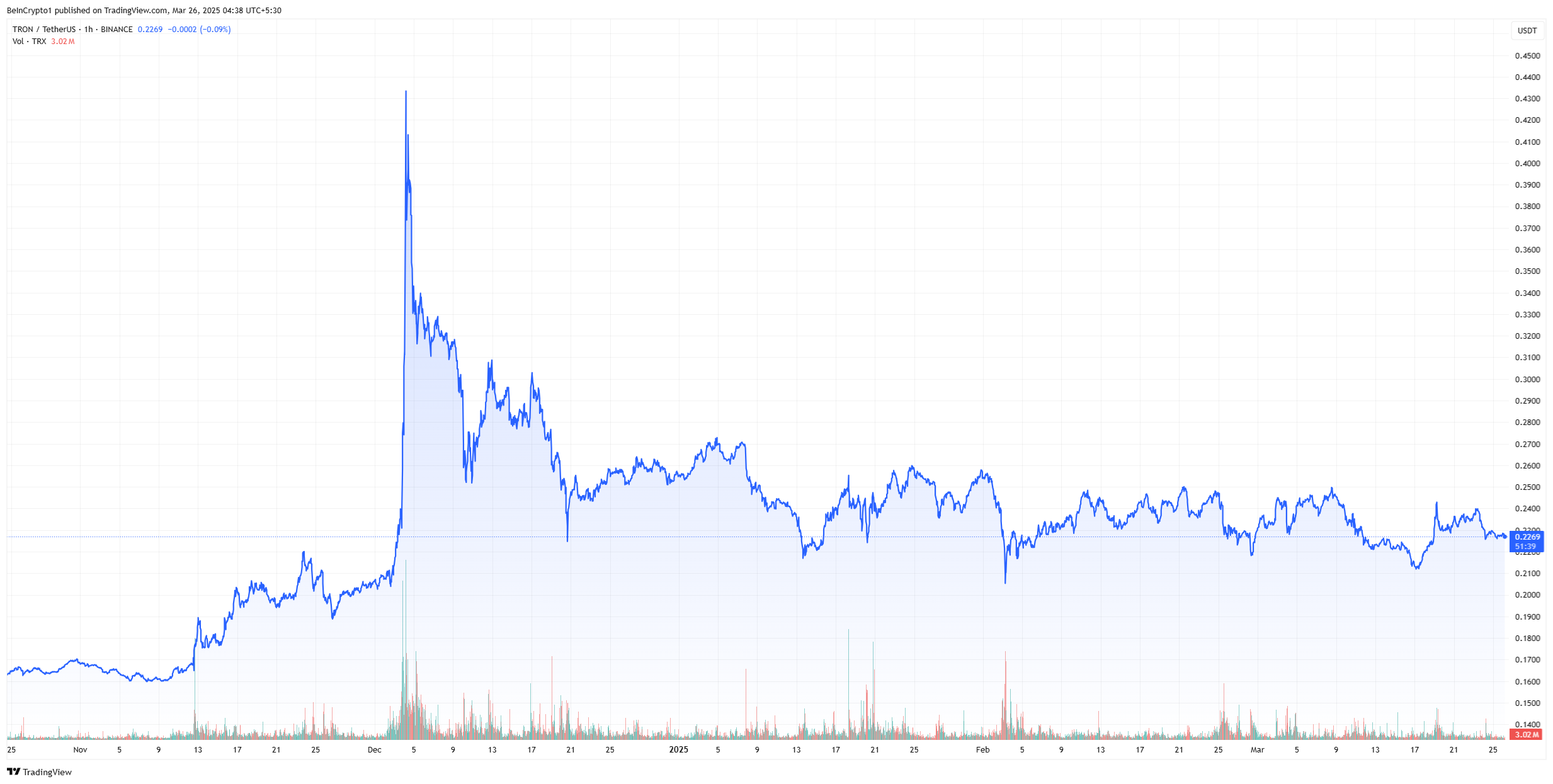
However, these conflicts of interest are not just limited to Sun’s investment.
Potential Binance Stake and Further Conflicts
Less than two weeks ago, reports surfaced that the Trump family had held talks to acquire a financial stake in Binance’s US division. Though Binance’s founder, Changpeng Zhao, discredited these reports, flirting with the theory comes easily.
Zhao could also benefit from an agreement. In 2023, he pleaded guilty to federal charges for failing to implement adequate anti-money-laundering measures at Binance.
Following his plea, Zhao resigned as Binance’s CEO. Motive-driven speculations point toward the possibility of a potential presidential pardon.
For Massad, maneuvers like these are natural when a president directly involves himself in crypto ventures.
“I think there is a huge risk of conflicts of interest and corruption by virtue of the President and people associated with him selling crypto assets—whether that’s through World Liberty Financial or the meme coins. It creates the potential for ongoing conflicts, because people who might want to curry favor with the administration could buy the coins,” Massad told BeInCrypto.
All the while, Trump benefits his crypto ventures every time he makes a pro-crypto announcement.
Is Trump Manipulating the Crypto Market?
A week into March, Trump signed an executive order to establish a Crypto Strategic Reserve and a US Digital Asset Stockpile. In his original announcement, Trump said the reserve would include Bitcoin, Ethereum, and altcoins like XRP, ADA, and SOL.
The crypto market responded immediately, with all five cryptocurrencies posting strong gains. Yet, Trump’s announcement quickly raised concerns over potential market manipulation.
With Bitcoin, Ethereum, and XRP in its treasury, WLF’s holdings grew in value as those assets appreciated. This growth could have boosted investor confidence, leading to higher demand for WLF tokens.
The crypto market’s overall surge and attention to Trump-related projects also generated greater investor interest in WLF, contributing to its price appreciation.
Meanwhile, Trump’s meme coin surged following the President’s reserve announcement. While TRUMP’s price stood at $13.55, with a trading volume of almost $1.2 billion on March 2, those numbers surged to $17.46 and $3.6 billion, respectively, following the news a day later.
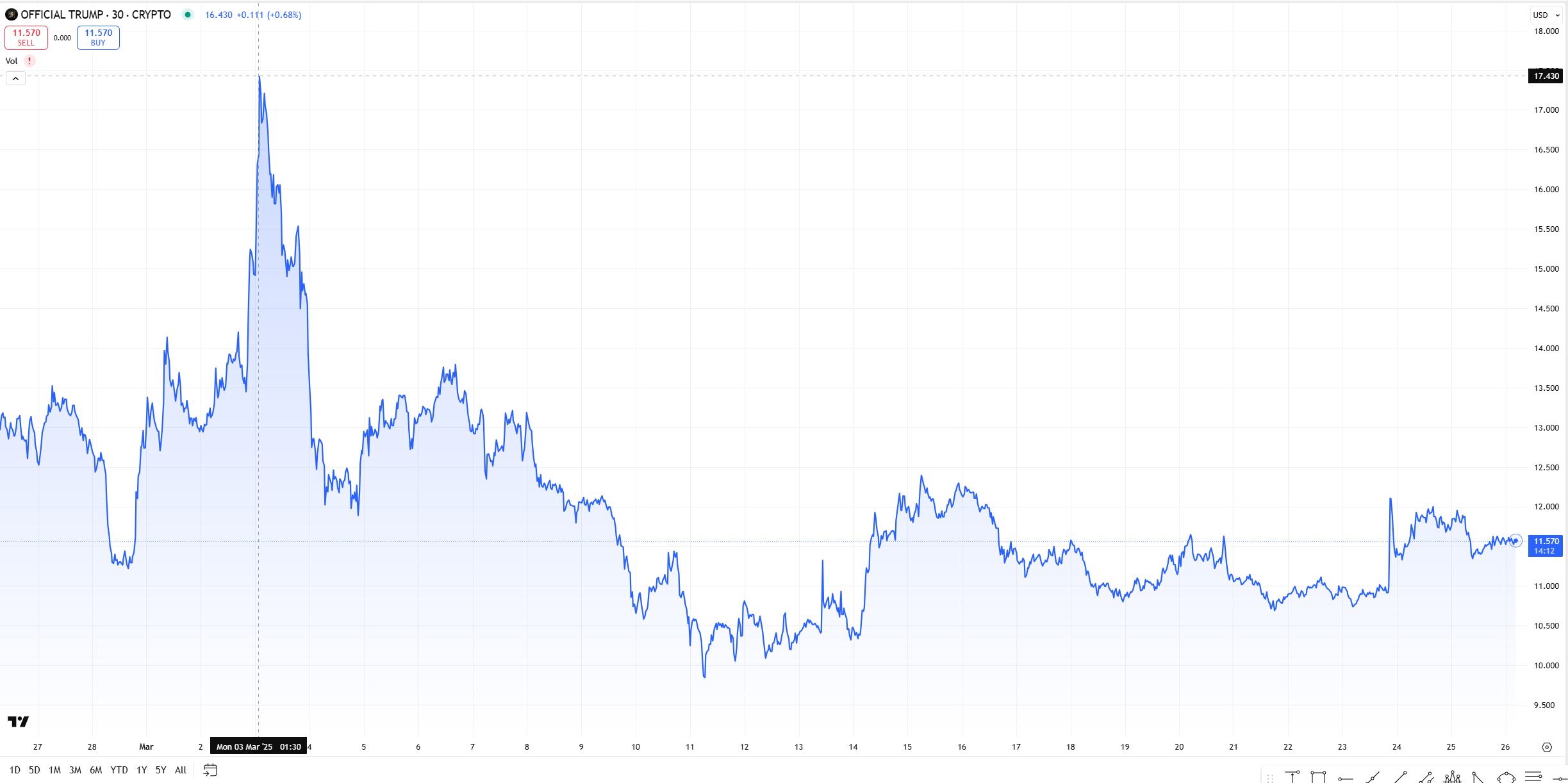
On March 4, TRUMP’s price and trading volume plummeted below the numbers they registered only two days earlier.
“I think the meme coins have looked like a classic pump-and-dump scheme or money grab. I don’t think the issue should be, why not let people invest in these things if they want to? Of course they should have the right to invest in whatever they want. The issue is the propriety of the President of the United States selling things that capitalize on his being the President,” said Massad.
Even Ethereum Co-Founder Vitalik Buterin touched on the damaging effects of political meme coins in a social media post published five days after TRUMP’s launch.
“Now is the time to talk about the fact that large-scale political coins cross a further line: they are not just sources of fun, whose harm is at most contained to mistakes made by voluntary participants, they are vehicles for unlimited political bribery, including from foreign nation states,” Buterin said.
Given Trump’s active participation in the crypto industry over the past several months, a vital question remains: Why hasn’t Trump been held accountable over these apparent conflicts of interest?
The answer remains short and bitter: He can’t be.
Can Trump Be Held Accountable?
The potential conflicts of interest arising from Donald Trump’s involvement in the cryptocurrency industry have drawn the attention of various political figures, particularly those focused on government ethics and oversight.
US Senator Elizabeth Warren has been the most vocal opponent of Trump’s dealings in the crypto industry.
A day before the White House Digital Assets Summit, Warren sent an extensive letter to Trump’s crypto czar, David Sacks.
“I write today to request information about how you, as President Trump’s ‘Crypto Czar,’ have addressed your conflicts of interest, and how you will prevent the President and other private individuals from directly profiting off of the Trump Administration’s efforts to selectively pump the value of certain crypto assets, drop crypto asset-related enforcement actions, and deregulate the crypto asset industry. These actions have the potential to benefit billionaire investors, Trump Administration insiders, and speculators at the expense of middle-class families,” Elizabeth Warren wrote.
However, not much else can be done beyond letters that demand responses and clarifications from the Trump administration.
The Legal Loophole
US Presidents are largely exempted from conflict of interest provisions. This exemption has been based on legal interpretations that argue these laws could impede the President’s ability to fulfill their constitutional duties.
“The problem is, the POTUS is not subject to the conflict-of-interest laws that apply to most other executive branch officeholders. There is the Foreign Emoluments Clause in the Constitution, which prohibits accepting gifts from foreign countries. There’s also a domestic clause that prohibits accepting gifts from the government. But beyond that, he’s not subject to the usual conflict-of-interest standards. So, it’s unfortunate that we don’t have those standards applicable to a president. I think, had any other president done these things, there would be far more outrage,” Massad told BeInCrypto.
Given the legal circumstances, public scrutiny and political pressure are the best ways to hold a president accountable for potential conflicts of interest.
Yet, despite the legal exemptions for sitting presidents, the ethical implications of Trump’s crypto dealings remain undeniable.
As the lines between political power and personal profit continue to blur, the necessity for clear ethical standards, even without legal mandates, becomes increasingly urgent.
Failing to do so might erode public trust in the crypto industry, generating potentially irreversible consequences.
Disclaimer
Following the Trust Project guidelines, this feature article presents opinions and perspectives from industry experts or individuals. BeInCrypto is dedicated to transparent reporting, but the views expressed in this article do not necessarily reflect those of BeInCrypto or its staff. Readers should verify information independently and consult with a professional before making decisions based on this content. Please note that our Terms and Conditions, Privacy Policy, and Disclaimers have been updated.
Market
Hedera (HBAR) Bears Dominate, HBAR Eyes Key $0.15 Level

Hedera (HBAR) is under pressure, down roughly 13.5% over the past seven days, with its market cap holding at around $7 billion. Recent technical signals point to growing bearish momentum, with both trend and momentum indicators leaning heavily negative.
The price has been hovering near a critical support zone, raising the risk of a breakdown below $0.15 for the first time in months. Unless bulls regain control soon, HBAR could face further losses before any meaningful recovery attempt.
HBAR BBTrend Has Been Turning Heavily Down Since Yesterday
Hedera’s BBTrend indicator has dropped sharply to -10.1, falling from 2.59 just a day ago. This rapid decline signals a strong shift in momentum and suggests that HBAR is experiencing an aggressive downside move.
Such a steep drop often reflects a sudden increase in selling pressure, which can quickly change the asset’s short-term outlook.
The BBTrend, or Bollinger Band Trend, measures the strength and direction of a trend using the position of price relative to the Bollinger Bands. Positive values generally indicate bullish momentum, while negative values point to bearish momentum.

The further the value is from zero, the stronger the trend. HBAR’s BBTrend is now at -10.1, signaling strong bearish momentum.
This suggests that the price is trending lower and doing so with increasing strength, which could lead to further downside unless buyers step in to slow the momentum.
Hedera Ichimoku Cloud Paints a Bearish Picture
Hedera’s Ichimoku Cloud chart reflects a strong bearish structure, with the price action positioned well below both the blue conversion line (Tenkan-sen) and the red baseline (Kijun-sen).
This setup indicates that short-term momentum is clearly aligned with the longer-term downtrend.
The price has consistently failed to break above these dynamic resistance levels, signaling continued seller dominance.
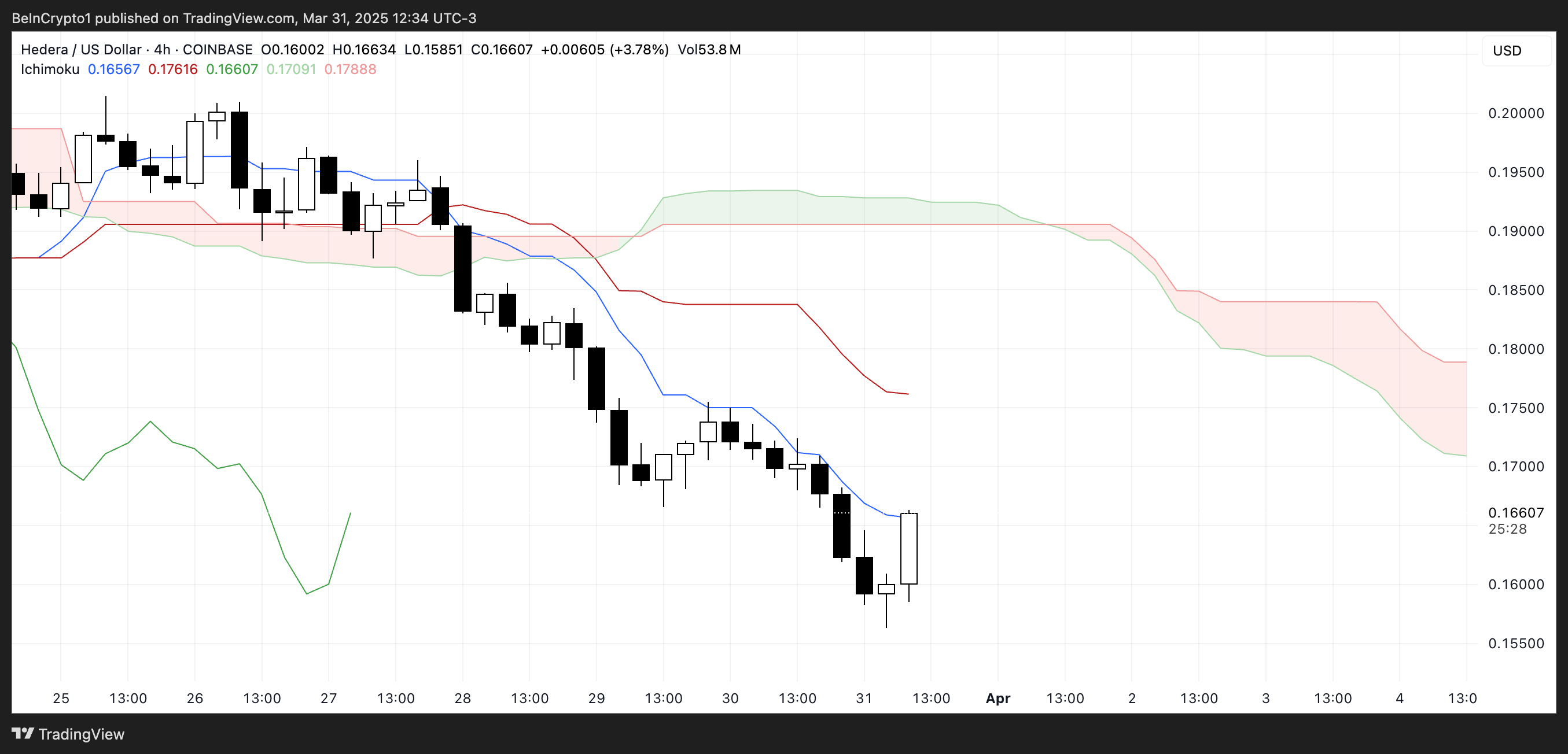
The future cloud is also red and trending downward, suggesting that bearish pressure is expected to persist in the near term.
The span between the Senkou Span A and B lines remains wide, reinforcing the strength of the downtrend. For any potential reversal to gain credibility, HBAR would first need to challenge and break above the Tenkan-sen and Kijun-sen, and eventually push into or above the cloud.
Until then, the current Ichimoku configuration supports a continuation of the bearish outlook.
Can Hedera Fall Below $0.15 Soon?
Hedera price has been hovering around the $0.16 level and is approaching a key support at $0.156.
If this support fails to hold, it could open the door for further downside, potentially pushing HBAR below the $0.15 mark for the first time since November 2024.
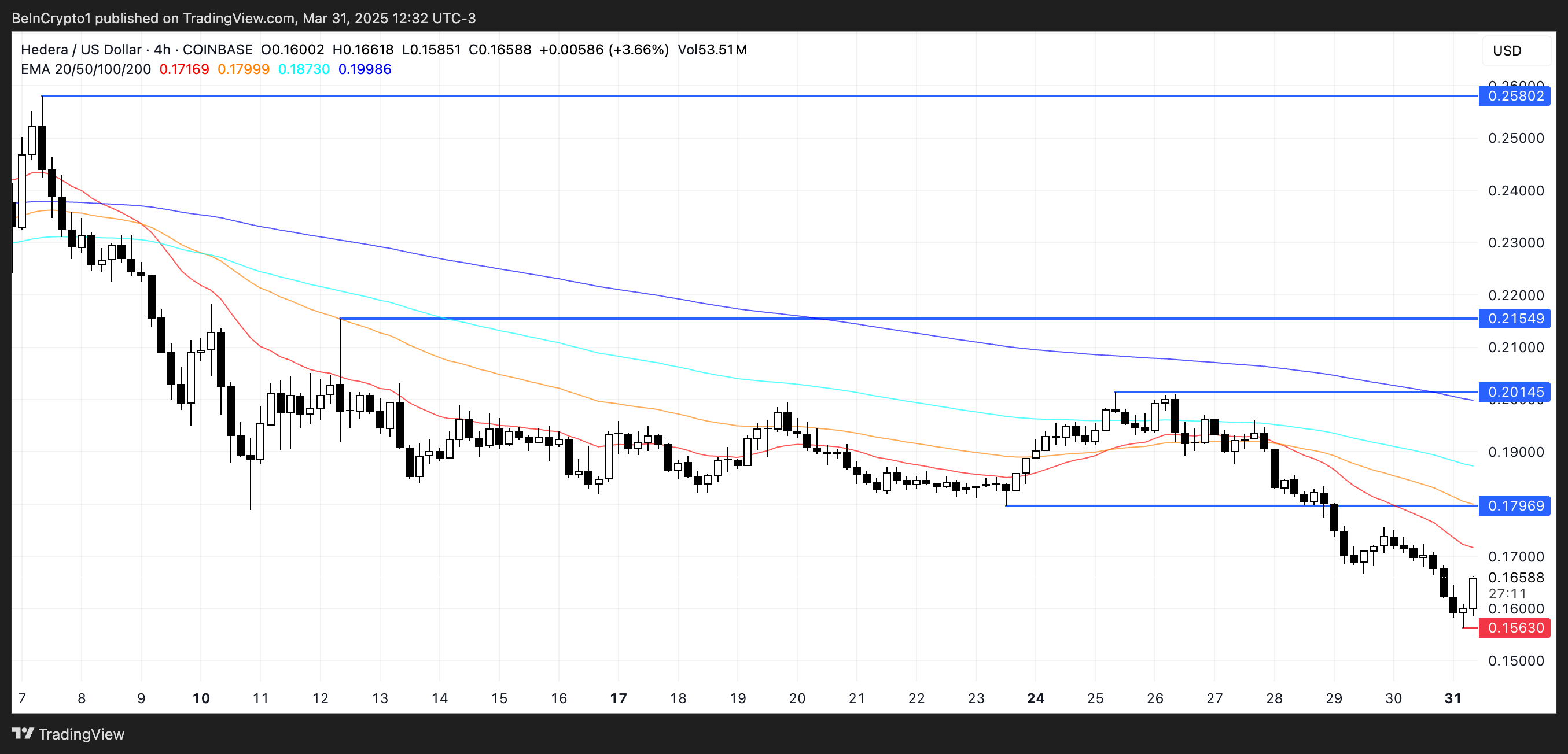
However, if HBAR manages to reverse its current trajectory and regain bullish momentum, the first target to watch is the resistance at $0.179.
A breakout above that level could lead to a stronger rally toward $0.20 and, if momentum continues, even reach $0.215. In a more extended bullish scenario, HBAR could climb to $0.25, signaling a full recovery and trend reversal.
Disclaimer
In line with the Trust Project guidelines, this price analysis article is for informational purposes only and should not be considered financial or investment advice. BeInCrypto is committed to accurate, unbiased reporting, but market conditions are subject to change without notice. Always conduct your own research and consult with a professional before making any financial decisions. Please note that our Terms and Conditions, Privacy Policy, and Disclaimers have been updated.
Market
Coinbase Tries to Resume Lawsuit Against the FDIC


Coinbase asked a DC District Court if it could resume its old lawsuit against the FDIC. Coinbase sued this regulator over Operation Choke Point 2.0 and claimed that it’s still refusing to release relevant information.
Based on the information available so far, it’s difficult to draw definitive conclusions. The FDIC maintains that it responded to its opponents’ questions truthfully, though it has shown delays in the past.
Coinbase vs the FDIC
Coinbase, one of the world’s largest crypto exchanges, has been in a few fights with the FDIC. The firm has been pursuing the FDIC over Operation Choke Point 2.0 for months now, and has achieved impressive results. Despite this, however, Coinbase is asking the DC District Court to resume its litigation against the regulator:
“We’re asking the Court to resume our lawsuit because the FDIC has unfortunately stopped sharing information. While we would have loved to resolve this outside of the legal system – and we do appreciate the increased cooperation we’ve seen from the new FDIC leadership – we still have a ways to go,” claimed Paul Grewal, Coinbase’s Chief Legal Officer.
The FDIC has an important role in US financial regulation, primarily dealing with banks. This gave it a starring role in Operation Choke Point 2.0, hampering banks’ ability to deal with crypto businesses. However, it recently started a pro-crypto turn, releasing tranches of incriminating documents and revoking several of its anti-crypto statutes.
Grewal said that he “appreciated the increased cooperation” from the FDIC but that the cooperation stopped weeks ago. According to Coinbase’s filing, the FDIC hasn’t sent any new information since late February and claimed in early March that the exchange’s subsequent requests were “unreasonable and beyond the scope of discovery.”
On one hand, the FDIC has previously been slow to make relevant disclosures in the Coinbase lawsuit. On the other hand, Operation Choke Point 2.0 sparked significant tension within the industry, and a determined group is now aiming to significantly weaken the regulatory bodies involved.
Until the legal battle continues, it’ll be difficult to make any definitive statements. The FDIC will likely have two weeks to respond to Coinbase’s request.
Disclaimer
In adherence to the Trust Project guidelines, BeInCrypto is committed to unbiased, transparent reporting. This news article aims to provide accurate, timely information. However, readers are advised to verify facts independently and consult with a professional before making any decisions based on this content. Please note that our Terms and Conditions, Privacy Policy, and Disclaimers have been updated.
Market
BlackRock’s Larry Fink Thinks Crypto Could Harm The Dollar
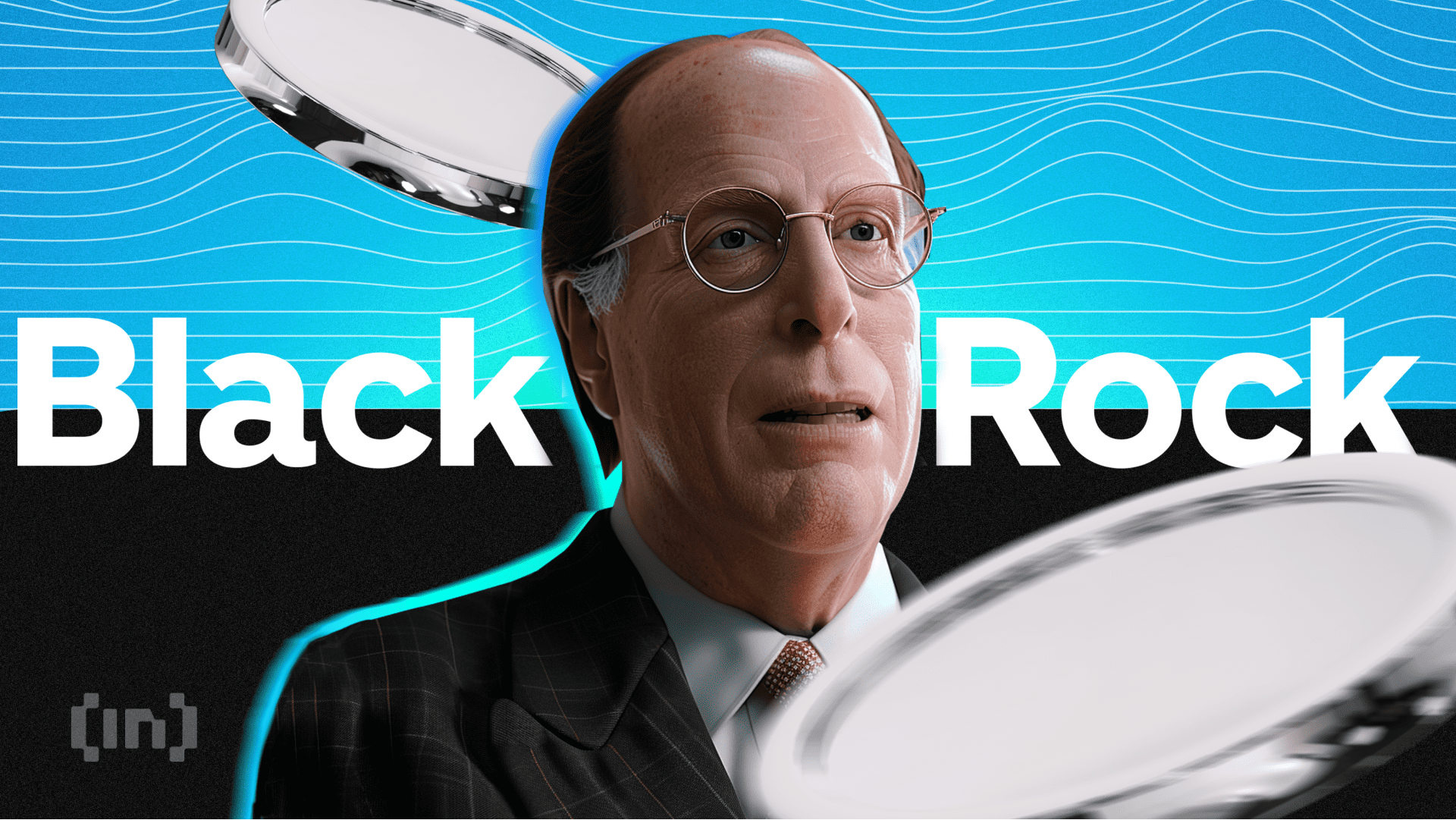

Larry Fink, CEO of BlackRock, claimed in a recent letter that Bitcoin and crypto could damage the dollar’s international standing. If investors treat Bitcoin as an inflation hedge to the dollar, it could precipitate serious trouble.
However, he was also adamant that the industry offers a lot of advantages, particularly through tokenization.
Larry Fink Sees Opportunity in Crypto
BlackRock is the leading Bitcoin ETF issuer in the US, and its CEO Larry Fink has long been bullish on Bitcoin. However, as Fink described in his most recent Annual Chairman’s Letter to investors, crypto’s best interest doesn’t always align with TradFi or the dollar.
“The US has benefited from the dollar serving as the world’s reserve currency for decades. But that’s not guaranteed to last forever. By 2030, mandatory government spending and debt service will consume all federal revenue, creating a permanent deficit. If the US doesn’t get its debt under control… America risks losing that position to digital assets like Bitcoin,” he said.
To be clear, Fink insisted that he supports crypto and listed some practical problems that he believes it can solve. He expressed a particular interest in asset tokenization, claiming that a digital-native infrastructure would improve and democratize the TradFi ecosystem.
Despite these advantages, Fink recognizes the danger that crypto can present to the US economy if not properly managed. He addressed the longstanding practice of using crypto to hedge against inflation, a wise practice for many assets.
However, if a wide swath of investors think Bitcoin is more stable than the dollar, it would threaten USD’s status as the world reserve currency. A scenario like that would be very dangerous to all of TradFi, and Fink has a particular interest in protecting BlackRock. Such an event would doubtlessly impact crypto as well.
“Decentralized finance is an extraordinary innovation. It makes markets faster, cheaper, and more transparent. Yet that same innovation could undermine America’s economic advantage if investors begin seeing Bitcoin as a safer bet than the dollar,” Fink added.
He didn’t offer too many specific solutions to this growing problem, but Fink isn’t the only person concerned with the issue. President Trump recently suggested that stablecoins could promote dollar dominance worldwide. Even if the dollar is seen as unstable, its adoption within a rapidly growing global industry like stablecoins could help reinforce its strength and relevance.
Of course, there are also drawbacks to Trump’s plan. Larry Fink acknowledged a possible threat from crypto, but continues to espouse its utility. Its benefits are too good to ignore.
Disclaimer
In adherence to the Trust Project guidelines, BeInCrypto is committed to unbiased, transparent reporting. This news article aims to provide accurate, timely information. However, readers are advised to verify facts independently and consult with a professional before making any decisions based on this content. Please note that our Terms and Conditions, Privacy Policy, and Disclaimers have been updated.
-

 Market20 hours ago
Market20 hours agoBitcoin Bears Tighten Grip—Where’s the Next Support?
-

 Market19 hours ago
Market19 hours agoEthereum Price Weakens—Can Bulls Prevent a Major Breakdown?
-
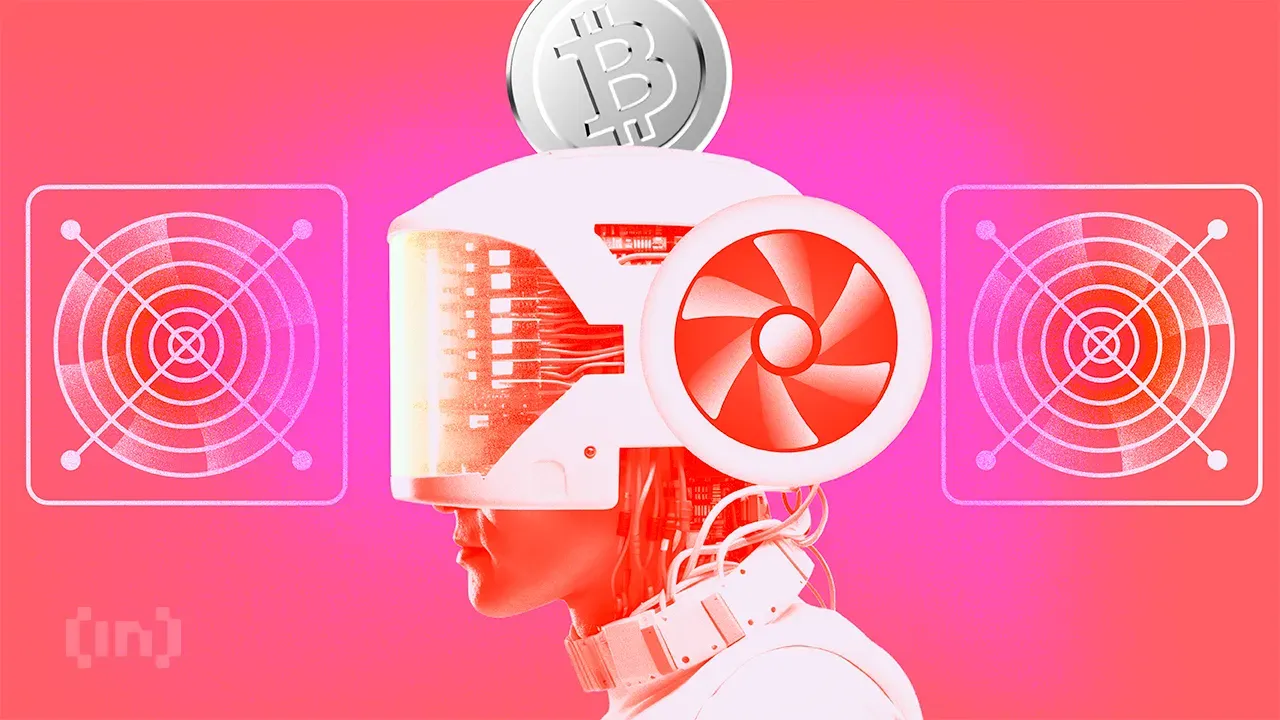
 Bitcoin12 hours ago
Bitcoin12 hours agoMarathon Digital to Sell $2 Billion in Stock to Buy Bitcoin
-
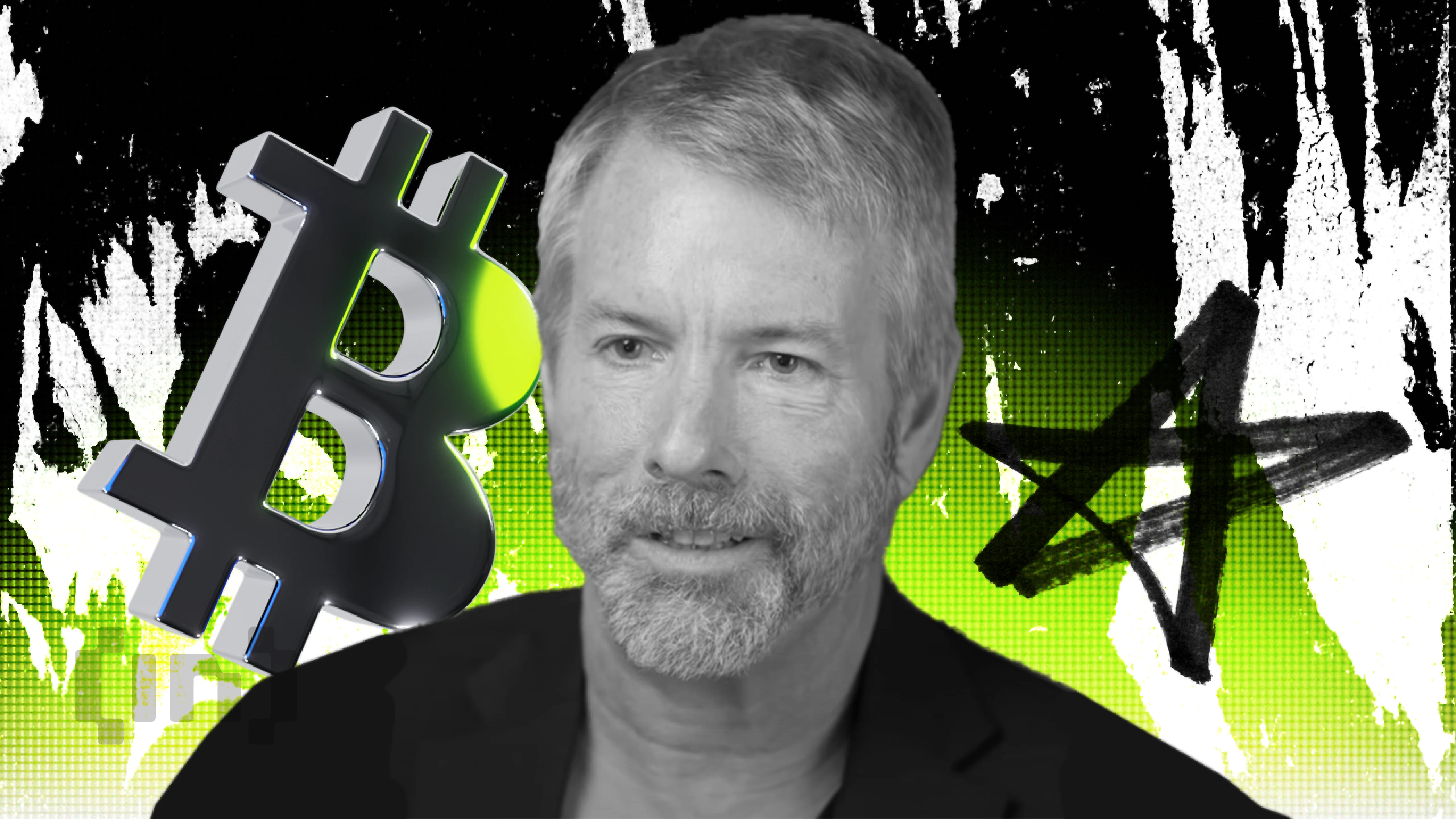
 Bitcoin7 hours ago
Bitcoin7 hours agoStrategy Adds 22,048 BTC for Nearly $2 Billion
-
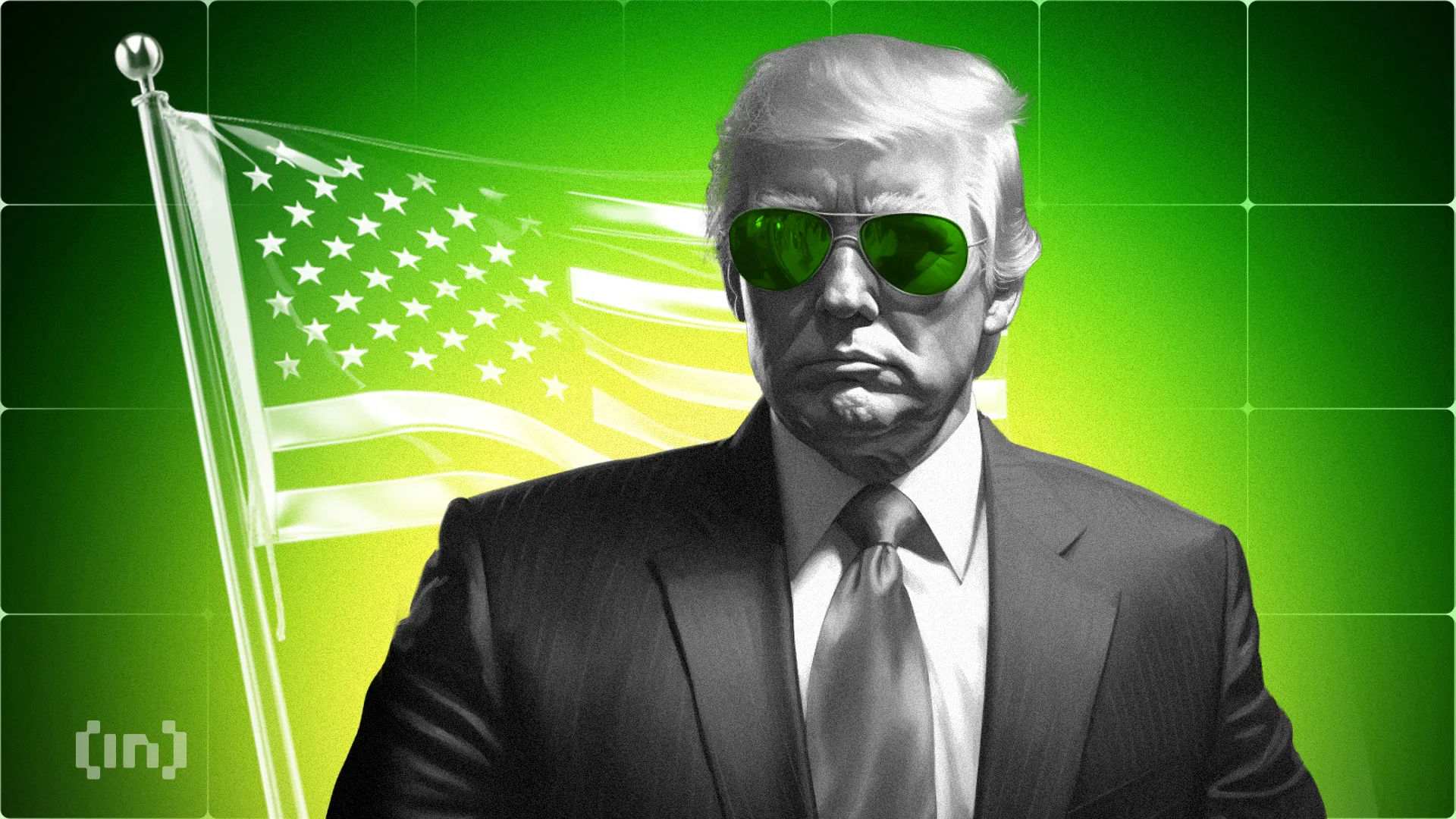
 Market12 hours ago
Market12 hours agoStrategic Move for Trump Family in Crypto
-
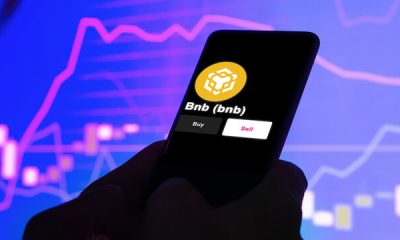
 Market7 hours ago
Market7 hours agoBNB Breaks Below $605 As Bullish Momentum Fades – What’s Next?
-

 Market11 hours ago
Market11 hours agoTop Crypto Airdrops to Watch in the First Week of April
-
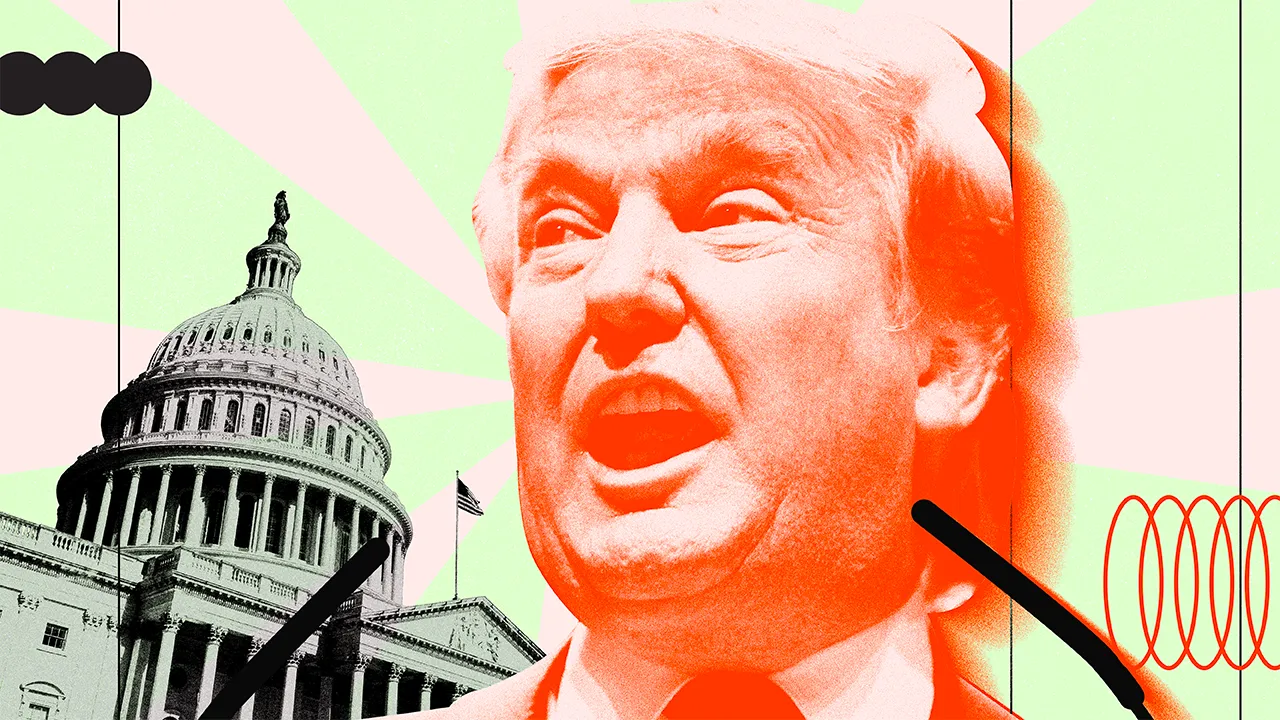
 Market6 hours ago
Market6 hours agoTrump Family Gets Most WLFI Revenue, Causing Corruption Fears


